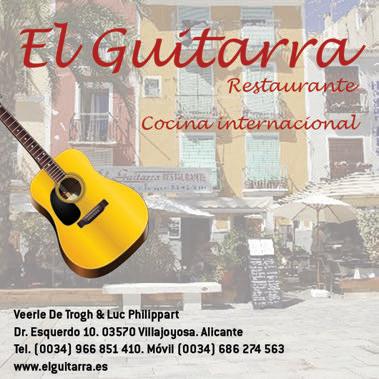
3 minute read
Historia/History Monumentos, museos y lugares de interés/

HistorIa HIStory
Advertisement
El Municipio de La Vila Joiosa tuvo sus primeros pobladores en la Edad de Bronce. El cerro donde se asienta el casco antiguo fue una ciudad ibérica y existen razones fundadas para identificarla con la Alonis de los textos clásicos. Las excavaciones de las necrópolis fenicias, íberas y romanas del Poble Nou, Les Casetes y Palasiet (s. VII aC. a VI dC.) han proporcionado muchos materiales de uso militar y cotidiano que se exponen en el Vilamuseu.
En época romana la zona experimentó un gran auge que se traduce en la identificación de la ciudad con Allon. De esto
La Vila Joiosa its first settlers in the Bronze Age. The hill where the old town is located was an iberian city and there are well-founder reasons to identify it with the Alonis of the classic texts. The excavations of the Phoenician, Iberian and Roman necrópolis of Poble Nou, Casetes and Palasiet have provided many materials for military and daily use that are displayed in VILAMUSEU.
The town was one of the Roman cities of the Land of Valencia, probably the one called Allon; a lot of archaelogical remains, materials, inscriptions, and Roman monuments (like the funeral
5
6

nos han quedado restos arqueológicos que podrás ver en el Vilamuseu. Durante la Edad Media las costas se despoblaron por el peligro pirata y en el siglo VIII el levante se islamizó, hasta el 1300 cuando el almirante de Jaime II, Bernat d’en Sarrià, funda esta población. La Vila Joiosa significa “la ciudad alegre”, un nombre atractivo para los nuevos pobladores cristianos del Noreste peninsular.
La ciudad tuvo un castillo que la protegía. Hoy puede verse el espacio que ocupó e información sobre su función en el Parque del Castell en el Casco antiguo. También tuvo murallas. Las que se han conservado son del siglo XVI. Es un ejemplo de arquitectura renacentista, así como las torres vigías de la huerta.
Según la tradición, los pobladores de La Vila Joiosa pidieron la intercesión del santo del día para repeler un importante ataque de los piratas berberiscos. Desde entonces, el día 29 de julio se venera a Santa Marta como patrona de la ciudad, y desde 1694 se celebran en su honor las fiestas de Moros y Cristianos. tower of Sant Josep) have been founded and most of them are exhibited in VILAMUSEU. During the Middle Ages, the town became depopulated, with the local people taking refuge in the interior due to the constant danger of pirate attacks. At the 8th Century the Levante área was islamized until the 13th Century, when Admiral Bernat de Sarrià founded the new town “La Vila Joiosa”, that means “Joyful City”, a perfect name to attract new settlers from Aragón and Catalonia.
The town had its own castle, no longer standing. At present time, it is posible to see the space that the fortress occupied as well as information about its function in the “Parque del Castell” (Old Town). The town had also walls that were bombarded and repaired constantly,; the walss standing today (16th Century) are fine examples or early Renaissance military architecture. The danger of pirate attacks continued until the 18th Century, as demonstrated by numerous defensive towers (El Xarco, L’aguiló).
According to tradition, the residents of La Vila Joisoa requested the intercession of the saint of the day to rapel a major attack by the Berber pirates. Since then, on July 29 Santa Marta is venerated as patrones of the city, and since 1694 we celebrate the Moors ands Christians festivity in her honour.













